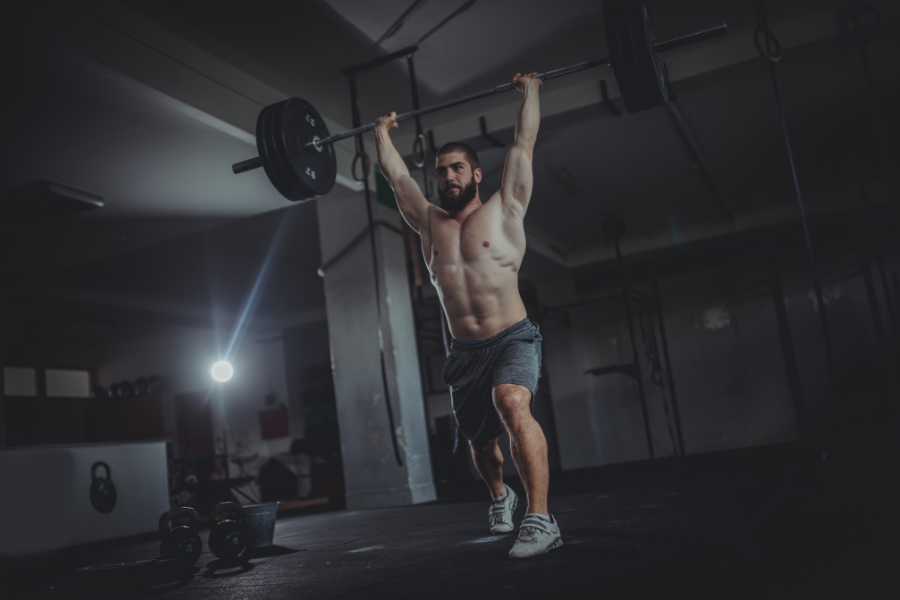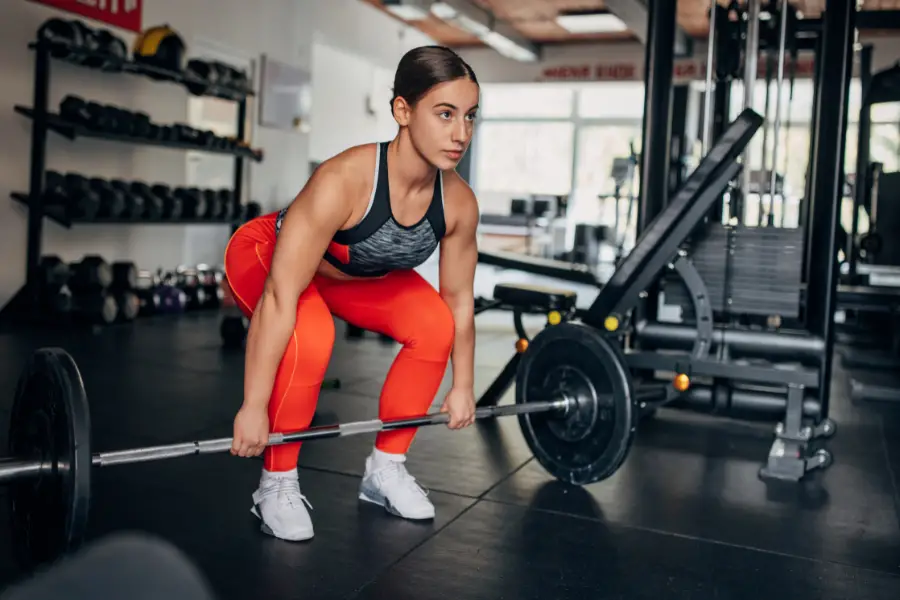Do you want to build a home or garage gym where you can lift your heart out? Picking the right type of gym flooring is key to making sure that it stands up to heavy weights being dropped on it over and over. When it comes to choosing the best gym floor for your hardcore workouts, material, and type matter. Get ready to create the perfect foundation for your powerful pursuits!
For heavy weightlifting, rubber gym flooring is best due to its durability, impact resistance, noise reduction, and non-slip properties. Weightlifting platforms, combining rubber mats and boards, create a solid surface but aren’t necessary for most home gyms unless you’re a high-level weightlifter.
Ready to build a home or garage gym where you can unleash your full lifting potential? When it comes to creating the perfect foundation for your gym, the material and type of gym floor you choose make a significant difference. Let’s explore the best options for heavy weightlifting and discover which offers the best durability, impact resistance, noise reduction, and non-slip properties to elevate your lifting experience.
Contents
Which Type Of Gym Floor Works Best For Heavy Weightlifting?
The best way to prepare your home gym for heavy weightlifting is with a rubber gym floor. Rubber is durable, can handle heavy impacts, dampens noise and vibrations, and is also easy to clean while providing good grip for both weightlifters and the equipment.
There are different ways you can go about getting a rubber gym floor in your garage gym or workout room. Here are the three best options for people that want to lift heavy weights.
- Rubber Floor Mats: Rubber floor mats or rolls are a popular choice for weightlifting areas due to its excellent shock absorption and durability. It provides a high level of impact resistance, reducing the risk of damage to both the weights and the subfloor. Look for thick rubber mats or rolls with a high density to handle heavy loads. You can find the best rubber rolls for heavy lifting here.
- Rubber Tiles: Similar to rubber flooring, rubber tiles offer excellent impact resistance and durability. Interlocking rubber tiles are a convenient option as they can be easily installed and replaced if damaged. Make sure to choose tiles with sufficient thickness and density to provide adequate protection.
- Platform Systems: Weightlifting platforms consist of a combination of rubber mats and wooden or composite boards. You stand on the boards while the rubber is located where the weight plates hit the floor. These platforms provide a solid and stable surface for heavy lifts, particularly for exercises like deadlifts and Olympic lifts. The rubber mats absorb the impact, while the wooden or composite boards offer a firm surface for lifting. Both the boards and tiles are kept in place by a metal frame that can be secured to the floor.
For most people, rubber rolls are the best option. They provide plenty of stability to stand on and it means you can drop the weights anywhere in the gym. There are no different surfaces to be aware of so you can do your exercises anywhere. Since in most home gyms, people do a variety of different exercises, just having rubber everywhere works best.
For really high-level lifters, a platform has that little bit of extra stability. Unless you’re a top 1% weightlifter, you probably won’t notice the difference but hey, it looks cool in your gym.
If covering your whole gym in rubber rolls is too expensive, you can go for smaller rolls and just lay it where you lift weights. Make sure you’ve got enough room to put all the equipment (like a bench) on the rubber floor and drop the weights. In my opinion, rubber gym rolls are still better than tiles, even for small spaces.

Necessary Features For Heavy Weightlifting Home Gym Floor?
What are you exactly looking for when selecting a gym floor for heavy weightlifting? Here are four key things.
- Durability: To withstand the impacts of heavy weights being dropped and heavy equipment standing on top, the flooring material has to be durable, impact resistant and tough.
- Protection: The flooring has to protect both the floor underneath and the equipment on top.
- Noise & Vibration Reduction: Lifting heavy weights means dropping heavy weights. This can create a lot of noise and vibrations. A good gym floor reduces both of these.
- Non-Slip and Stays In Place: When working with heavy weights, you don’t want to slip on the floor or the floor to slip on the surface it’s laid on.
You can probably see why rubber is the preferred choice but if you don’t, read this article comparing foam and rubber for gym flooring. In short, rubber has all the features you’re looking for in an impact-resistant gym floor.
Click here to find some other things gym flooring can do for your home gym.
Double-Up on Flooring Or Padding
If you’re afraid a single layer of flooring isn’t enough for what you lift, you can double up on the flooring or use some other methods to dampen the noise and impact. This is especially going to work for damping noise and vibrations.
- Extra Tiles: The easiest way to do this is to just get some extra tiles and place those in the locations where the weights will touch the floor. Both rubber and foam tiles will work here. The combination of rubber flooring at the bottom and foam tiles on top will work very well for reducing the impact and noise but the foam tiles might get torn up pretty quickly. Some thick (1”+) rubber patio tiles can also work well in this case.
- Deadlift Pads: There are pads specifically for deadlifting. Deadlift pads are usually a piece of foam in a vinyl cover. They work almost like airbags for your barbell. They are very effective in damping the noise and impact of a dropped barbell.
- Acoustic Foam Underlay: Acoustic underlay is a thing that’s often used in apartments so you don’t bother the neighbors. You can also put it under a rubber gym floor and it will reduce some of the noise and vibrations that would otherwise be transferred to other parts of the building. However, while this works well, heavy rubber mats plus heavy impacts will deteriorate the underlay over time. This works best for medium-intensity weightlifting.
Need high-quality rubber gym flooring? Click here to find the best.

How Thick Should Rubber Flooring Be For Heavy Weightlifting?
When selecting rubber flooring for heavy weightlifting, it is important to consider the thickness of the rubber to ensure it can withstand the impact and protect the subfloor adequately. The appropriate thickness depends on factors such as the weight of the equipment and the type of exercises being performed. Here are some general guidelines:
- Free Weights: For areas where free weights are primarily used, such as barbells and dumbbells, a recommended thickness is typically between 8mm (5/16 inch) and 15mm (5/8 inch). This thickness provides sufficient shock absorption and protection against dropped weights. However, noise damping might leave a little to be desired. There are no drawbacks to going thicker except the price.
- Olympic Lifting: For areas where Olympic lifts, such as snatches and cleans, are performed, it is recommended to have thicker rubber flooring. A thickness of around 20mm (3/4 inch) to 30mm (1 1/4 inch) is often recommended to handle heavier impacts and provide enhanced protection.
- Powerlifting: If your gym focuses on powerlifting exercises like squats, bench presses, and deadlifts, thicker rubber flooring is beneficial. Aim for a thickness of around 25mm (1 inch) to 40mm (1 1/2 inches) to handle the heavy loads and impacts associated with powerlifting.

